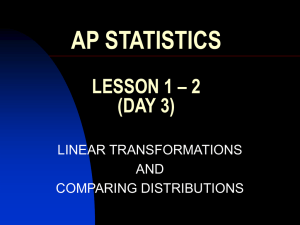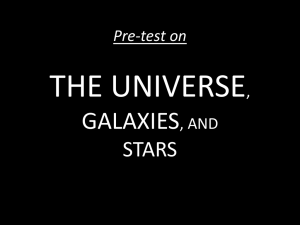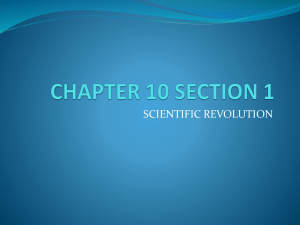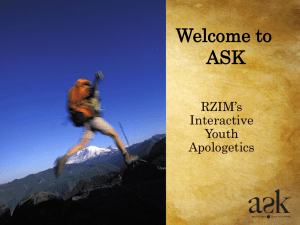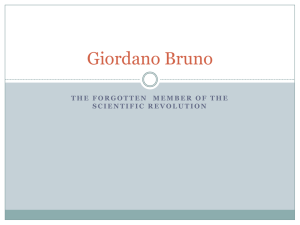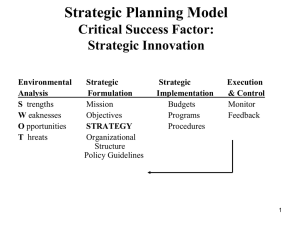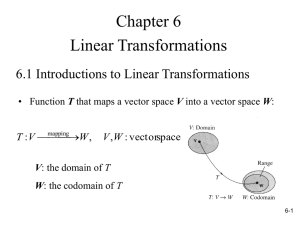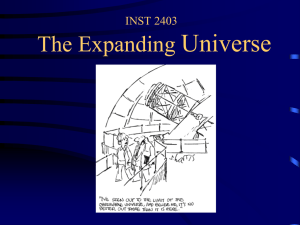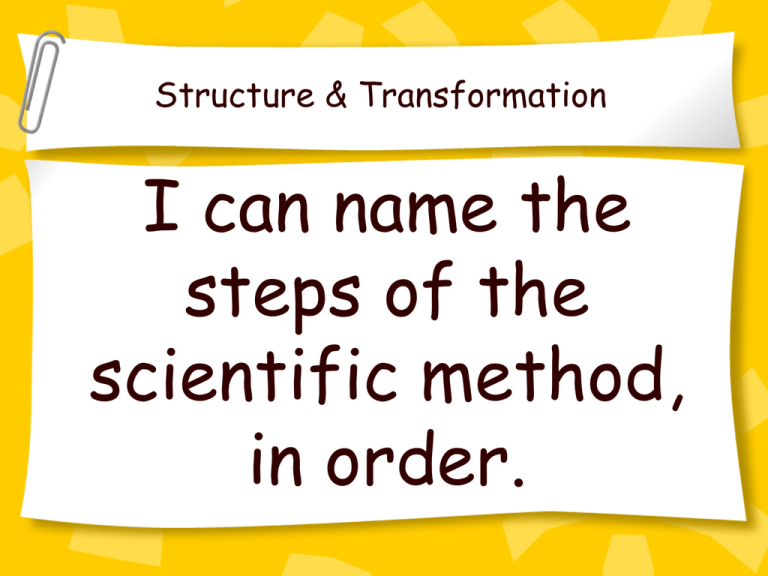
Structure & Transformation
I can name the
steps of the
scientific method,
in order.
Structure & Transformation
I can use the
scientific method
to create an
original experiment.
Structure & Transformation
I can analyze a
previous experiment
to determine if it was
done correctly.
Structure & Transformation
I can write a lab
report to communicate
the steps and results
of an experiment.
Structure & Transformation
I can identify the
parts of an atom.
Structure & Transformation
I can identify the
electron as the part of
the atom that allows
two or more atoms to
combine.
Structure & Transformation
I can identify an
element.
Structure & Transformation
I can identify a
compound.
Structure & Transformation
I can distinguish
between elements
and compounds.
Structure & Transformation
I can name common
elements and
compounds used in
everyday life.
Structure & Transformation
I can predict how
different factors will
affect how fast
chemicals react
together.
Structure & Transformation
I can classify
elements according
to their properties.
Structure & Transformation
I can identify
physical changes.
Structure & Transformation
I can identify
chemical changes.
Structure & Transformation
I can distinguish
between physical and
chemical changes.
Structure & Transformation
I can name several
compounds that can
break down under
chemical changes.
Structure & Transformation
I can describe how
some elements
combine to form
compounds.
Structure & Transformation
I can explain how
compounds are different
than the elements that
form them.
Structure & Transformation
I can demonstrate
how mass is
conserved during a
chemical change.
Structure & Transformation
I can describe
matter’s physical
properties.
Structure & Transformation
I can describe
matter’s chemical
properties.
Structure & Transformation
I can describe the
properties of
solids, liquids and
gases.
Motion & Forces
I can describe the
relationship
between mass and
inertia.
Motion & Forces
I can state and give
real life examples of
Newton’s laws of
motion.
Motion & Forces
I can distinguish
between balanced
and unbalanced
forces.
Motion & Forces
I can estimate the amount
of gravity between objects
and by observing their
masses and the distance
between them.
Motion & Forces
I can design a scientific
investigation that explores the
position, speed and motion of
objects using appropriate tools
and technology.
Motion & Forces
I can interpret the
movement of an
object based on
graphed data.
I can calculate the
amount of work done
on an object by using
the formula W=F x d
Motion & Forces
I can distinguish
between gravity
and magnetism.
Motion & Forces
I can describe the
difference between
mass and weight.
Motion & Forces
I can predict the
effects of gravity
on various objects.
The Earth and the Universe
I can explain how
gravity and inertia
combine to keep
objects in orbit.
The Earth and the Universe
I can describe
the pattern of
the tides.
The Earth and the Universe
I can explain how the
position of the sun,
moon and Earth
affect the tides.
The Earth and the Universe
I can identify
the phases of
the moon.
The Earth and the Universe
I can explain how the
position of the sun,
moon and Earth
produce moon phases.
The Earth and the Universe
I can describe a
solar eclipse.
The Earth and the Universe
I can describe a
lunar eclipse.
The Earth and the Universe
I can explain how the
position of the sun,
moon and Earth produce
eclipses (solar and
lunar).
The Earth and the Universe
I can describe our
solar systems place
in the Milky Way
Galaxy.
The Earth and the Universe
I can apply the laws
of motion to the
movement of
satellites.
The Earth and the Universe
I can identify the
composition of the
Earth’s
atmosphere.
The Earth and the Universe
I can identify the
layers of the
Earth’s
atmosphere.
The Earth and the Universe
I can predict how
uneven heating of the
earth’s surface effects
wind movement.
The Earth and the Universe
I can use data to
predict changes in
the atmosphere.
The Earth and the Universe
I can describe how
heat is transferred
through conduction.
The Earth and the Universe
I can describe how heat
is transferred through
convection.
The Earth and the Universe
I can describe how
heat is transferred
through radiation.
The Earth and the Universe
I can explain how heat from
the Earth’s surface is
transferred to the
atmosphere.
The Earth and the Universe
I can identify and
describe the layers of
the Earth by their
physical properties.
The Earth and the Universe
I can identify and
describe the layers
of the Earth by what
they are made of.
The Earth and the Universe
I can define
tectonic plate.
The Earth and the Universe
I can describe the
theory of
continental drift.
The Earth and the Universe
I can describe a
convergent
boundary.
The Earth and the Universe
I can describe a
divergent
boundary.
The Earth and the Universe
I can describe a
transform
boundary.
The Earth and the Universe
I can explain how
movement in the Earth’s
mantle results in the
motion of the
lithospheric plates.
The Earth and the Universe
I can explain how the
changes we see today
are similar to those
that occurred in the
past.
The Earth and the Universe
I can use data to explain
the layers of the Earth
based on evidence obtained
from earthquakes and
volcanic activity.
The Earth and the Universe
I can predict how the
Earth’s surface will change
at the different types of
lithospheric plate
boundaries.
The Earth and the Universe
I can describe how
moving water shapes
the surface of the
Earth by the process of
erosion.
The Earth and the Universe
I can predict the short
and long term impact on
living organisms because
of changes in the
Earth’s surface.
Unity & Diversity
I can define genes.
Unity & Diversity
I can identify
where genes are
located.
Unity & Diversity
I can relate how genes
carry hereditary
information from one
generation to another.
Unity & Diversity
I can distinguish
between learned
and inherited
traits.
Unity & Diversity
I can describe and
model the
structure of DNA.
Unity & Diversity
I can define a
punnett square.
Unity & Diversity
I can predict the
possible outcomes of
inheritance through the
use of Punnett squares.
Unity & Diversity
I can use a
pedigree to
interpret data.
Unity & Diversity
I can compare
similarities among
people from different
geographical cultures.
Unity & Diversity
I can understand that
experiments involving living
things must respect
potential risks to their
health.
Unity & Diversity
I can defend my opinion
about ethical decisions
involving humans and
other organisms.
Unity & Diversity
I can describe
sexual
reproduction.
Unity & Diversity
I can describe
asexual
reproduction.
Unity & Diversity
I can compare and
contrast sexual and
asexual reproduction.
Unity & Diversity
I can describe how
sexual reproduction
creates variations
among offspring.
Unity & Diversity
I can explain how sex
cells carry genetic
information.
Biological Change
I can relate information
to past life forms and
the environments they
lived in.
Biological Change
I can explain how
species that depend on
each other can also
become extinct.
Biological Change
I can explain how
organisms that cannot
adapt to changes in the
environment may become
extinct.
Biological Change
I can use evidence from
the fossil record to show
that organisms change
slowly over time, resulting
in diversity of life.
Biological Change
I can explain the
law of
superposition.
Biological Change
I can recognize
exceptions to the
law of
superposition.
Energy Transformations
I can identify the
different forms
of energy.
Energy Transformations
I can describe real
life examples of
different forms of
energy.
Energy Transformations
I can explain the law of
conservation of energy
and how it applies in
various situations.
Energy Transformations
I can explain how
heat energy
transfers.
Energy Transformations
I can understand the
differences of kinetic
energy in the molecules
of a solid, liquid and gas.
Energy Transformations
I can describe several
examples of the
transfer and
transformation of
energy.
Energy Transformations
I can model and
explain the flow of
energy in ecosystems.
Energy Transformations
I can understand that in
most situations systems
move toward stability
and remain that way.
Energy Transformations
I can describe how energy
flows through an
ecosystem by analyzing
food chains, food webs and
energy pyramids.
Energy Transformations
I can explain how the
sun is the major
source of energy.
Energy Transformations
I can describe the
process of
photosynthesis.
Energy Transformations
I can interpret data
showing how organisms
in a food chain or food
web affect each other.
Interdependence
I can explain the
difference between
biotic and abiotic
factors in an ecosystem.
Interdependence
I can explain how
competitions for limited
resources can result in
extinction even if
environmental conditions
remain the same.
Interdependence
I can understand how the
population of an organism can
increase, decrease or remain
the same based on available
biotic and abiotic factors.
Interdependence
I can evaluate the
consequences of the
introduction of a nonnative species to an
established ecosystem.
Interdependence
I can identify potential
factors that could
cause the endangerment
or extinctions of an
organism.
Interdependence
I can identify one
or more species
that have become
extinct.
Interdependence
I can design an
investigation that shows
the results of a change
in a biotic or abiotic
factor in an ecosystem.
Interdependence
I can understand that
compromise does not
always lead to desirable
outcomes for everyone.
Interdependence
I can research and
discuss the pros and
cons of things that have
an impact on the
environment.
Energy Transformations
I can understand the
sun is the major
external source of
energy on Earth.
Energy Transformations
I can understand that
energy from inside the
Earth can cause volcanic
eruptions and plate
tectonic movement.
Energy Transformations
I can explain how the
sun affects various
Earth systems.
Energy Transformations
I can describe how
waves are one way
energy is
transferred.
Energy Transformations
I can list different
types of waves.
Energy Transformations
I can name and
identify real world
examples of energy.
.
.
.
.
.
.

